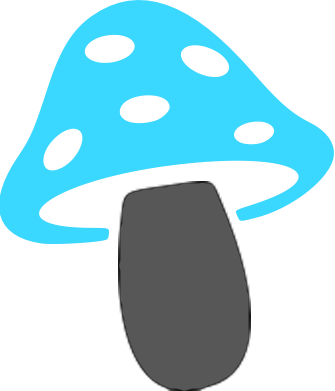The Fascinating World of Mescaline
Mescaline is a psychedelic alkaloid primarily derived from cacti such as Peyote (Lophophora williamsii). It has been used for centuries in spiritual ceremonies by indigenous peoples and has also garnered significant interest in modern science and pop culture.
In this article, you will discover the key facts about the effects, origin, and cultural significance of mescaline. Additionally, we highlight the risks and legal frameworks.
Discover more exciting products in this category and learn more about the fascinating world of cacti:
Discover more cactiWhat is mescaline?
Mescaline is a naturally occurring alkaloid with psychedelic properties. It belongs to the class of phenylethylamines and is primarily found in cacti such as Peyote (Lophophora williamsii), San Pedro, and Peruvian Torch.
Indigenous communities have used mescaline for centuries in spiritual ceremonies. Today, it is mainly used in the Native American Church as part of the Peyote cult.
Its effects include intense hallucinogenic experiences, often described as transcendent or spiritual. These properties make it one of the most well-known psychedelic substances, studied both culturally and scientifically.

Origin and history of mescaline
Mescaline naturally occurs in various cacti, including Peyote (Lophophora williamsii), San Pedro (Echinopsis pachanoi), and Peruvian Torch (Echinopsis peruviana). These plants primarily grow in arid regions of North and South America.
The use of mescaline dates back more than 5,000 years when indigenous peoples used this substance in ritual and spiritual ceremonies. These traditions are deeply rooted in their cultures and continue to this day.
The scientific discovery of mescaline began in the 19th century when Arthur Heffter first isolated it. Later, in 1919, Ernst Späth successfully synthesized mescaline, enabling further study of its properties.
Effects of Mescaline
Mescaline is known for its ability to expand consciousness and induce intense sensory and emotional experiences. This substance uniquely affects both perception and emotions.
Enhanced perception of colors, patterns, and shapes, often described as kaleidoscopic.
Feelings of unity with the environment and deep spiritual connection.
Emotional effects such as joy, awe, and introspective insights.
The effects strongly depend on the setting and the user’s mental state. They typically begin 30 to 60 minutes after ingestion, peak after about 2 hours, and can last up to 10 hours. During this time, both positive and challenging experiences are possible.
Pharmacology of Mescaline
Mescaline works by interacting with the serotonin receptor 5-HT2A. This binding causes changes in brain signal transmission that are responsible for the psychedelic effects.
After oral ingestion, mescaline is absorbed in the gastrointestinal tract.
Effects begin after about 30 to 60 minutes and peak after 2 hours.
The total duration of effects usually ranges from 6 to 10 hours.
On a physiological level, slight increases in blood pressure and heart rate may occur. Despite its low addiction potential, responsible use is essential to avoid risks such as persistent perceptual disturbances.

Chemical Properties of Mescaline
Mescaline is an alkaloid from the chemical class of phenylethylamines. Its molecular formula is C11H17NO3, with a molar mass of 211.26 g/mol. Its structure consists of a phenyl ring with three methoxy groups and an ethylamine side chain.
Mescaline is often used in the form of salts such as mescaline hydrochloride to enhance stability and solubility.
The substance has a melting point of approximately 183–185°C.
Analytical methods such as gas chromatography (GC) and mass spectrometry (MS) are used for identification.
The chemical properties of mescaline are essential for understanding its biological activity and its use in research.
Risks and Legal Status of Mescaline
The use of mescaline comes with various risks. Common side effects include:
Nausea and vomiting, especially in the early stages of ingestion.
Dizziness and temporary disorientation.
In rare cases: persistent perceptual disturbances or substance-induced psychosis.
Although mescaline has a low addiction potential, irresponsible use carries unpredictable risks. Combining it with other substances, especially MAO inhibitors, can be potentially dangerous.
Mescaline-containing cacti such as Peyote, San Pedro, and Peruvian Torch are legally available in the Netherlands as long as they are sold in their natural, unprocessed form. These cacti naturally contain the psychedelic compound mescaline, but regulations distinguish between the plant itself and the extracted active substance.
The legal status of mescaline varies by country:
- In most countries, the possession, trade, and production of mescaline or mescaline-containing plants are regulated.
Conclusion on Mescaline
Mescaline is a fascinating substance that leaves an impression due to both its cultural significance and its psychedelic effects. For thousands of years, it has played a central role in spiritual rituals of indigenous communities while also inspiring modern science.
Despite its potential, improper use of mescaline carries risks that should not be underestimated. Responsible use, especially in a ritual or medical context, is essential to maximize benefits and minimize possible dangers.
Ongoing research on mescaline provides new insights into human consciousness and shows promising potential for treating mental health disorders. Nevertheless, the substance remains strictly regulated in most countries, limiting its use to scientific and medical purposes.
In summary, mescaline uniquely combines traditional knowledge with modern science and remains a subject of great cultural and scientific importance.












